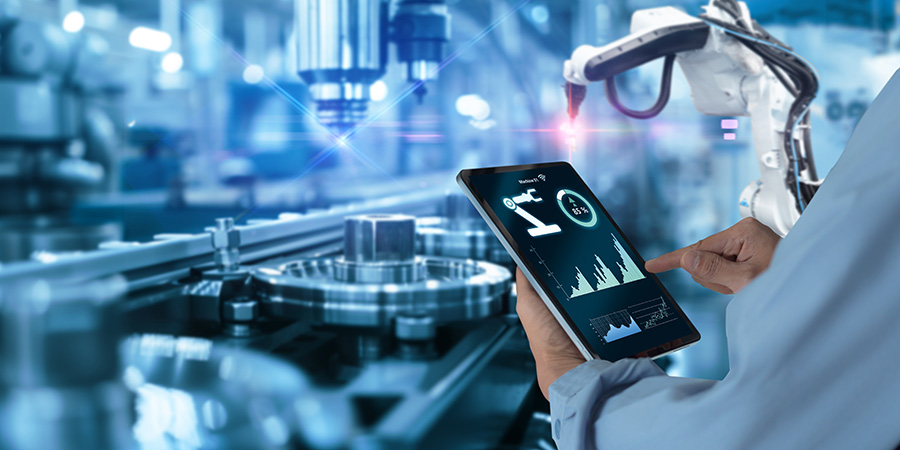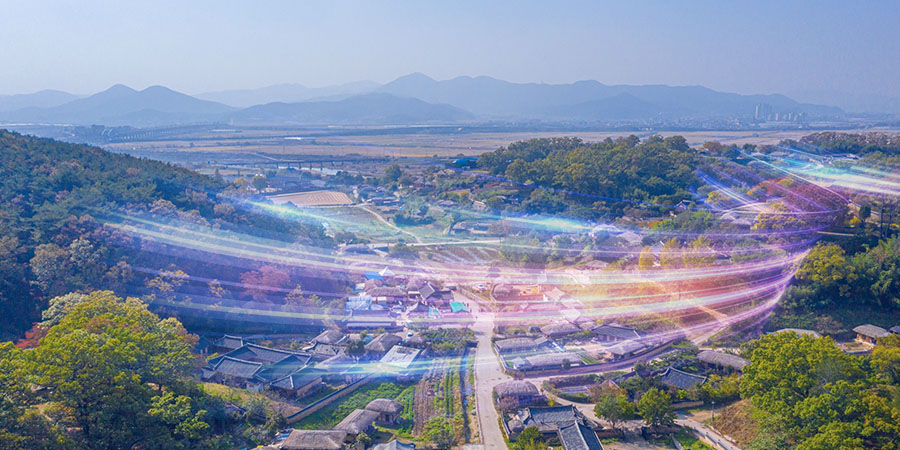The Asia Pacific (APAC) region is at the forefront of the global Industrial Internet of Things (IIoT) revolution, leveraging connected technologies to optimize production, enhance operational efficiency, and drive economic growth.
The APAC Industrial IoT (IIoT) market is rapidly expanding, driven by advancements in edge computing, 5G infrastructure, and strategic industry collaborations. According to Astute Analytica insights, edge computing, utilized by 72% of IT leaders, enhances data processing at the source, while the rollout of 5G significantly improves connectivity and reliability, both of which are vital aspects to consider when integrating IoT innovations within the industrial sector.
The market is segmented by components, deployment models, organization size, and industry verticals, with sensors emerging as a dominant technology segment in Industrial IoT. The benefits of IIoT adoption are substantial—productivity can be increased by 25%, malfunctions can be reduced by 70%, and maintenance costs can drop by 25%.
Six key technologies often deployed alongside IIoT include additive manufacturing, augmented and virtual reality (AR/VR), collaborative robotics, connected machine vision, drones/UAVs, and self-driving vehicles. Global spending on IIoT solutions is expected to reach USD 500 billion in 2025, with over 70% of new deployments utilizing wireless sensors. These solutions enable remote monitoring, cutting on-site inspections by 60%, increasing operational efficiency by 25%, and reducing unplanned downtime by 50%.
Advancing IoT Innovation in Industrial Sectors
Since 2015, governments and initiatives in APAC have laid the groundwork for Industrial IoT adoption.
The Made in China 2025 initiative has transformed China into a global leader in high-tech manufacturing by modernizing its IIoT infrastructure. Launched as part of the country’s broader push toward intelligent manufacturing, the initiative focuses on strengthening key industries such as robotics, aviation, and electric vehicles (EVs). Made in China 2025 works in tandem with the Internet Plus initiative, which seeks to integrate cloud computing, big data, and IoT across various sectors, including manufacturing, healthcare, and finance.
China has made substantial public sector investments to support these initiatives, including allocating USD 4.4 billion to research and development (R&D) in smart devices. The country already dominates the machine-to-machine (M2M) market, accounting for nearly a third of the world’s cellular connections in this sector. China Telecom estimates that over 60% of the IoT-driven GDP impact in China will stem from M2M implementation. This extensive connectivity positions China as a key player in the IIoT revolution, with significant economic benefits projected.
Related: China to Build 10,000 5G-Powered Factories to Transform Industries
Meanwhile, the Digital India initiative, launched by the Indian government, has played a transformative role in modernizing the nation’s digital infrastructure and accelerating industrial advancements, particularly in the IIoT. As highlighted by Union Minister Kirti Vardhan Singh, Digital India has not only empowered citizens but also positioned India as a global leader in technology-driven governance and innovation.
Digital India has inspired a culture of digital adoption and laid the groundwork for faster, more efficient governance.
Additionally, the success of the Parivesh portal, which has transformed the process of granting environmental approvals, is a testament to how digital tools are reshaping industrial operations.
Furthermore, Japan introduced the Industrial Value Chain Initiative (IVCI) to advance the country’s industrial Internet revolution. Similarly, Singapore’s Smart Nation initiative aims to harness digital technologies, including IoT, to enhance urban living, create economic opportunities, and build a digital government. Hong Kong introduced the New Industrialisation and Technology Training Programme (NITTP) to support enterprises in upgrading their manufacturing processes through advanced technologies, including IIoT. The Malaysian government introduced the National IoT Strategic Roadmap to drive IIoT adoption across various sectors, while New Zealand established the IoT Alliance to accelerate the adoption of IoT technologies across the industrial industry.
Latest: Microsoft Commits USD 3B to Accelerate AI Growth in India
The Current Industrial IoT Landscape
In 2021, Nokia launched its mission-critical Industrial Edge solution to accelerate Industry 4.0 adoption. This platform enabled industries to leverage real-time data processing and automation, strengthening digital transformation efforts across manufacturing, logistics, and smart cities.
By 2022, the momentum for industrial digitalization grew stronger. True Corporation’s 5G was recognized as a key engine for industrial transformation in Thailand, driving the country’s shift toward a smarter, more connected economy. Huawei also introduced energy-efficient network solutions designed to accelerate industrial digitalization, reinforcing sustainability and smart manufacturing efforts across the APAC region.
In 2023, major advancements in Industrial IoT and connectivity reshaped industries, signaling a turning point in IIoT innovation. ABB and China Telecom joined forces to enhance digitalization and create an Industrial IoT laboratory, driving innovation in industrial automation. Additionally, Singtel successfully trialed the first 5G RedCap technology in Singapore, designed for mid-tier IoT devices such as smartwatches and industrial sensors, enhancing connectivity and efficiency.
Throughout 2023, several IoT-focused implementations bolstered APAC’s industrial revolution. ZTE, China Mobile, and Changzhou Xingqi Technology collaborated to advance industrial quality inspection through IoT-driven automation. Meanwhile, IIJ and Murata launched a new IoT data service to optimize data transmission and management across connected industries. In India, Airtel Business became the first to connect over 20 million IoT devices, reinforcing its leadership in the region’s growing IoT ecosystem. Cradlepoint introduced a zero-trust solution for cellular IoT scenarios, offering enterprises an S700 IoT router that connects light industrial, smart city, and portable devices via cellular and Wi-Fi networks. Finally, NTT and Cisco unveiled an Enterprise IoT-as-a-Service solution, simplifying the deployment and management of IoT infrastructure for businesses across APAC.
Interesting Read: Inside China’s Smart City Boom: Leveraging AI, 5G, and IoT for Urban Innovation
The Future of Industrial IoT in APAC
As evident in the aforementioned IIoT implementations, 2023 significantly impacted Asia’s manufacturing sector, improving predictive maintenance and real-time production monitoring.
Moving into 2025, AI-powered IoT solutions are gaining traction, enhancing smart factories and autonomous operations. The APAC supply chain is undergoing a tech revolution, incorporating AI, blockchain, and IoT for improved efficiency.
Astute Analytica predicts that by 2032, the APAC IIoT market will experience significant growth, reaching an estimated value of USD 52.7 billion. This represents a substantial increase from the market’s 2023 valuation of USD 26.4 billion. The market is set to grow at a compound annual growth rate (CAGR) of 8.0% from 2025 to 2032.
A major factor driving the growth of the IIoT market in APAC is the increased emphasis on automation and digitalization across various industries. As companies seek cost-effective and efficient industrial processes, the demand for IoT solutions that offer real-time monitoring, predictive maintenance, and operational optimization continues to rise. The rapid pace of industrialization in the region, along with the expanding manufacturing sector, is further fueling the need for smart technologies. Additionally, governments are actively pursuing digital transformation in key sectors such as manufacturing, energy, and utilities, contributing to the region’s growing IIoT market.
As these industries continue to embrace IIoT, the APAC region is on track to achieve significant operational transformation, contributing to long-term productivity, sustainability, and economic growth.
Latest IoT News:
How Vodafone Qatar is Revolutionizing Telecom with 5G, AI, and IoT
Asia Pacific IoT Spending: China Leads the Way
What Industrial IoT means for the future of the manufacturing sector
Support these statements with resources







